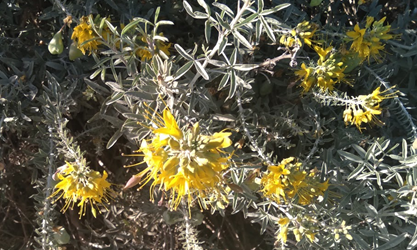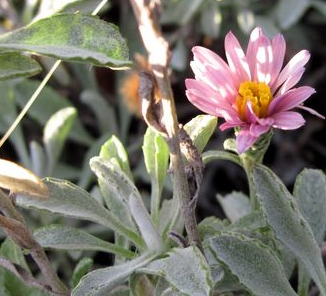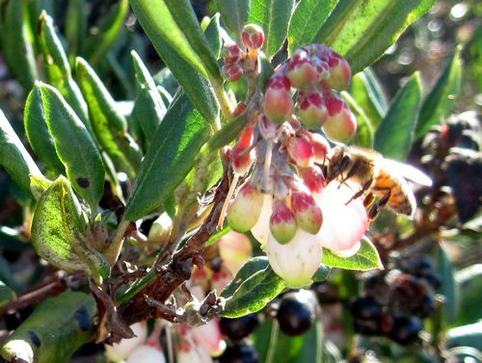GOING WILD WITH NATIVES: Monarch Larval & Nectar Plants Invite More Than Just Monarchs!
- k-england
- Aug 1, 2021
- 4 min read
Updated: Mar 2, 2022
By Susan Lewitt.

Monarchs love milkweed, and happily for San Diego, there are several indigenous species. Narrow Leaf Milkweed, Asclepias fascicularis, is the most widely available. Two others are Kotolo Milkweed, Asclepias eriocarpa, and California Milkweed, Asclepias californica. All bloom in the summer. To ensure adequate food for your caterpillars, plant numerous milkweeds, but if you run out, mature caterpillars will eat butternut squash or pumpkin.

Milkweeds grow well with many native plant species including other milkweeds. Keep your garden looking vibrant by locating milkweeds near plants that are not winter or summer dormant. Some companions include pines, oaks, manzanitas, Wooly Blue Curls, Trichostema lanatum, buckwheats and sages.
If you only have sustenance for caterpillars, you’re missing part of your butterfly ’buffet’. In addition to plants for caterpillars, adult butterfly nectar plants are needed. Flowers are needed throughout the year providing nectar for the Monarch’s four complete life cycles. This can be accomplished with plants that bloom nonstop, combined with seasonal bloomers for variety.

Adult Monarch butterflies get nectar from milkweed flowers during its summer bloom time, but my caterpillars usually eat the buds before they become flowers. This year with fewer caterpillars, my milkweed plant has been able to show off its delightful tiny flowers.
For nectar plants that bloom year-round, Bladderpod, Peritoma arborea, and Coyote Brush, Baccharis pilularis, are possibilities. Tree Mallow, Malva assurgentiflora, blooms year-round and mine has been visited by Monarchs and hummingbirds.
Bladderpod, photo on the left. Photo by Susan Lewitt 6. California Aster, photo on the right. Photo Courtesy of Calscape.
Broom Baccharis, Baccharis sarothroides, is good for winter blooms, and supplies seeds for small birds to eat. Blue Dicks, Dipterostemon capitatus, manzanitas, and Willow sp., Salix spp.,bloom Winter through Spring. For blooms Spring through Summer, consider adding Black Sage, Salvia mellifera, and Blueblossom Ceanothus, Ceanothus thyrsiflorus. A third choice, Great Valley Gumweed, Grindelia camporum, flowers through Fall. California Aster, Symphyotrichum chilense, will feed your butterflies during the Summer as a supplement to milkweed, and it attracts other butterflies and moths.
Mission Manzanita, Xylococcus bicolor, with Bee, photo on the right. Photo Courtesy of Calscape. Western Goldentop, photo on the right. Photo by Keir Morse.
Many forbs, also known as herbaceous plants, bloom from Summer to Fall, including Western Goldentop, Euthamia occidentalis, California Aster, Corethrogyne filaginifolia, Sweetscent, Pluchea odorata, California Goldenrod, Solidago velutina ssp. californica, and other Goldenrod species. A shrub that blooms Summer to Fall is California Broomsage, Lepidospartum squamatum.
Taking advantage of the many wonderful California native nectar plants for your garden will support biodiversity by attracting other native fauna including native pollinators. All these wonderful native plants in this article attract many different native fauna including bees, butterflies, moths, birds, and mammals. Some of the moths and butterflies that may liven up your garden include the Queen Butterfly, the Clio Tiger Moth, the Isabella Tiger Moth, Checkered White, Becker’s White, Western White, Gabb’s Checkerspot, Fatal Metalmark, Coyote Brush Gall Moth, Painted Lady, Gray Hairstreak, Common Checkered Skipper, the Western Tiger Swallowtail, Lorquin’s Admiral Butterfly, Sylvan Hairstreak, Bordered Patch Butterfly, California Tortoiseshell, Checkerspot, and the Southern Emerald Butterfly. Birds that might enhance your garden through song and visual appeal include doves, sparrows, finches, Anna’s hummingbirds, California Thrashers, and Scrub Jays. These are just a few of the many colorful critters that may frequent your native garden.
You‘ll see these and many more if you support biodiversity and Monarch Butterflies with needed native plants. According to the U.S. Fish and Wildlife Services, you will mow less, use less water and fertilizers, reduce erosion, and improve ground water, in addition to supporting birds, bats and bees when you plant native wildflowers. For more details on these pleasing native plants, go to Calscape.org. You will find much information there, including the types of wildlife attracted, and the best companion plants. For each species it will show the landscape requirements such as soil, drainage, and the amount of sun needed, and nurseries that sell these plants. It will show physical characteristics of each species, such as size, flower color, and blooming seasons. Many of these plants are available through the California Native Plant Society’s plant sale, and nurseries such as Moosa Creek. If you can’t find what you want, ask a native plant nursery about suitable substitutes.
Important alert: If you have Tropical Milkweed cut it back in winter!
Tropical Milkweed, which doesn’t die off naturally, is less desirable than native milkweed because over the winter it encourages harboring of Ophryocystis elektroscirrha (OE), a protozoan parasite that infects only Monarch and Queen butterflies. OE decreases migration success and cause body deformities which can be fatal to a population. To keep Monarch populations safe, cut back Tropical Milkweed to the ground in early winter to prevent parasites from overwintering on these plants.
Please reserve October 9, 2021, on your calendar for the California Native Plant Society - San Diego Chapter Native Plant Sale. It will be an event to enjoy, and a bit different from previous years. The finalized details will be in the October issue of this newsletter under “Going Wild With Natives”.









Comments